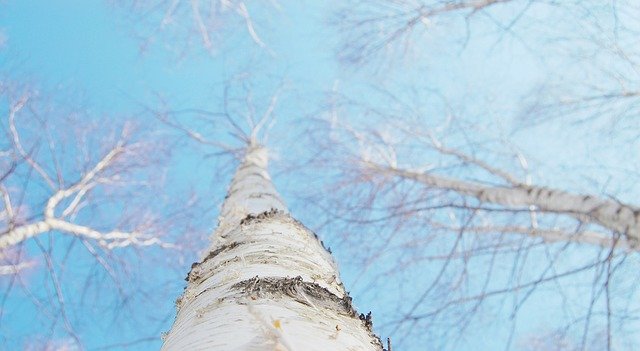Why you should Landscape for Winter Interest
We live in Alberta. There is no other province I'd rather live in. We have access to Mountains, Prairies, Lakes, Cities and Badlands all within a couple of hours of driving. But what if you don't travel? Then you need to grow your beautiful yard for winter interest.
Our active growing season is only from May through to the middle of September. It's short, but it can pack a punch. So how can you extend that season so you can enjoy it longer? You can do that by creating a landscape that incorporates winter interests.
Choose Deciduous Plant Material that has Colour
For 6-8 months of the year, our trees and shrubs aren't going to have leaves. So it's important to choose items that have some winter colour. Let's showcase those stems and have the colours pop against our white snow.
Birch - Betula
Birch
Choose either Paper Birch (Betula papyrifera) or Weeping Birch (Betula pendula) for a taller tree. The beautiful white trunk stands out against either blue clear skies or the more gray days.
Use this tree as a specimen with the Weeping varieties or as a row with the Paper Birch.
Amur Cherry - Prunus maackii
Amur cherry has the most beautiful bronze/gold trunk. The trunk alone is one of the main reasons that people will choose this tree. It is a bit larger ornamental tree, but if you have a larger yard it is worth using in your front yard.
Mountain Ash - Sorbus sp.
Mountain Ash is a bird lovers tree. The massive amount of dark red fruit that this tree produces attracts huge flocks of Cedar Waxwings. It is truly impressive to watch them in the tree.
If the fruit has been frozen for a while and starting to ferment be aware that the Waxwings can act a bit drunk and start flying into your windows. To help prevent that, you might need to attach a black paper bird to the inside of your window to combat the reflection of the trees in your windows.
Dogwood - Cornus sp.
Dogwood
There are a couple varieties of Dogwood that are worth mentioning when landscaping for winter interest. Purple Twig, Red Osier, Siberian Coral and Golden Twig are all amazing.
As their names suggest they each showcase the colour of their name. Purple has a deep purple, Red Osier has a deep red, Siberian Coral is coral and the Golden Twig is a yellow/green.
All of these colours stand out nicely against the white snow.
Evergreen Trees and Shrubs for winter interest
One of the most logical choices for adding visual winter interest to your landscape is through evergreen plant material.
This can get a little tricky if your yard is a smaller suburban lot. So when you are shopping for evergreens make sure to talk to your local nursery and ask for the mature size of any material you have your eye on.
The last thing you want is to plant a 40 ft tall spruce tree right in front of your picture window. Drive by any older subdivision and you'll see why. Those little 1 and 2-gallon potted trees are so cute at the nursery. 40 years down the road they are massive and completely dwarf your home.
Spruce, Pine and Fir
All 3 of these evergreen trees provide interest in the winter garden. They allow snow and hoar frost to gather on their branches. There is nothing more beautiful than a row of evergreen trees covered in heavy snow. It's the quintessential winter picture.
They also provide a backdrop for some of the other plants you have in front of them. They can also screen out unsightly areas of your home that can become visible once leaves drop off other trees.
If you're worried about height in your landscape dig a little deeper into your local nursery. They have dwarf varieties of Mugo Pine, Compact Blue Spruce and Dwarf Spruce. You won't see these at the large box stores but you should be able to find them at your local nursery that specializes in some out-of-the-box plants.
Juniper and Cedar
We have the tall winter landscape covered with deciduous trees, now we need to address the middle and lower areas of your winter garden.
Adding in some upright juniper and cedar can give added height to the landscape. I tend to shy away from any cedars in our Chinook climate. While many home gardeners wrap their cedars in burlap in the hope to protect them, in my experience it proves to decrease their longevity.
Wrapping in burlap creates a microclimate that increases too high temperature during the day only to plummet at night and stress out the cedars excessively.
If you are intent on growing cedar, instead grow them on the East and North sides of your home where they won't be exposed to the South Sun. Be aware of your prevailing winter wind though. Where I live it's from the North West. So for me, I'd only grow cedar in a very sheltered yard with reduced exposure to the dry winter wind.
Enough about cedars, let’s talk juniper. Juniper can give you the same upright look you want from a Cedar in a much hardier plant.
Juniper comes in upright and low-mounding varieties. Choose the one best suited to your design taste and you'll have colour all year round.
Grasses
Yes, you read that right. Grasses. You should have grass in your landscape. I'm not talking about lawn grass and quack grass. That grass is a pain and is the bane of all gardeners.
I'm talking ornamental grasses and grains. You can have a mix of annual and perennial grass that will add height and interest to the winter landscape.
Karl Forester grass is a great one to start with. It has tall fronds that will grace your garden. They will blow in the wind. So don't cut them down in the fall. Leave the stems to rise above the snow. The seeds will also drop and give the birds food as well.
Other grass to consider is Blue Lyme Grass, Fescue and Ribbon Grass. Careful with the Ribbon Grass. It's on my list of plants you should never grow.
Don't let winter get you down! Instead, landscape your yard for winter interest.
When the winter winds blow and the snow is flying, enjoy looking out your window at the beautiful winter landscape. Knowing that you've put some colour into your yard that you can enjoy from the comfort of your own warm home.
Happy Gardening,
Heidi Motz




